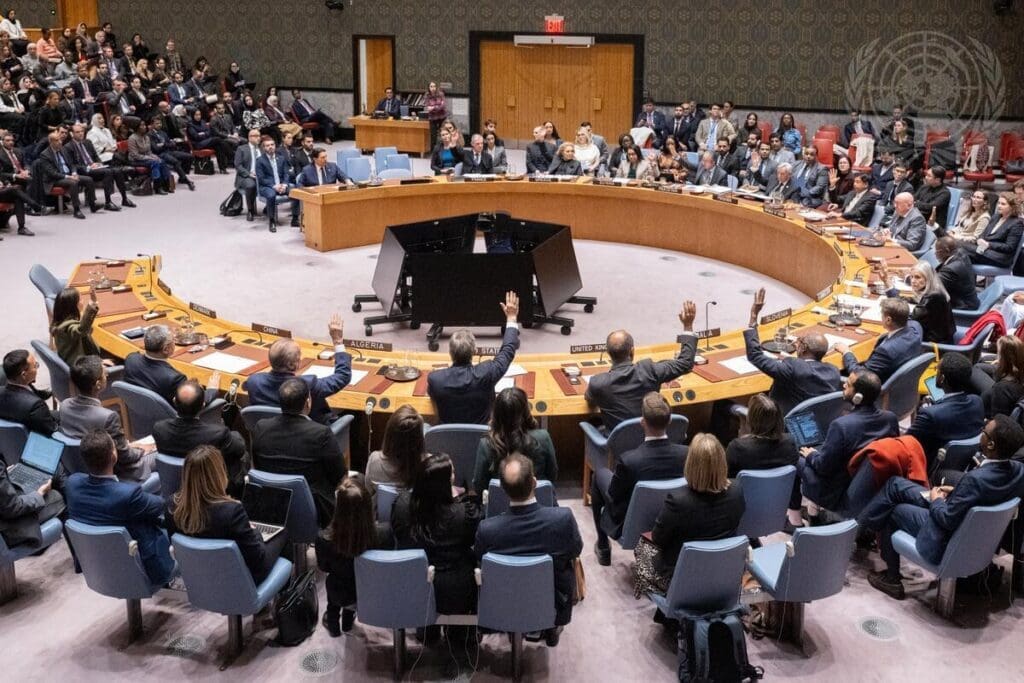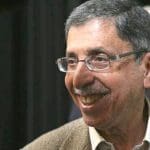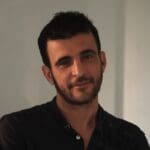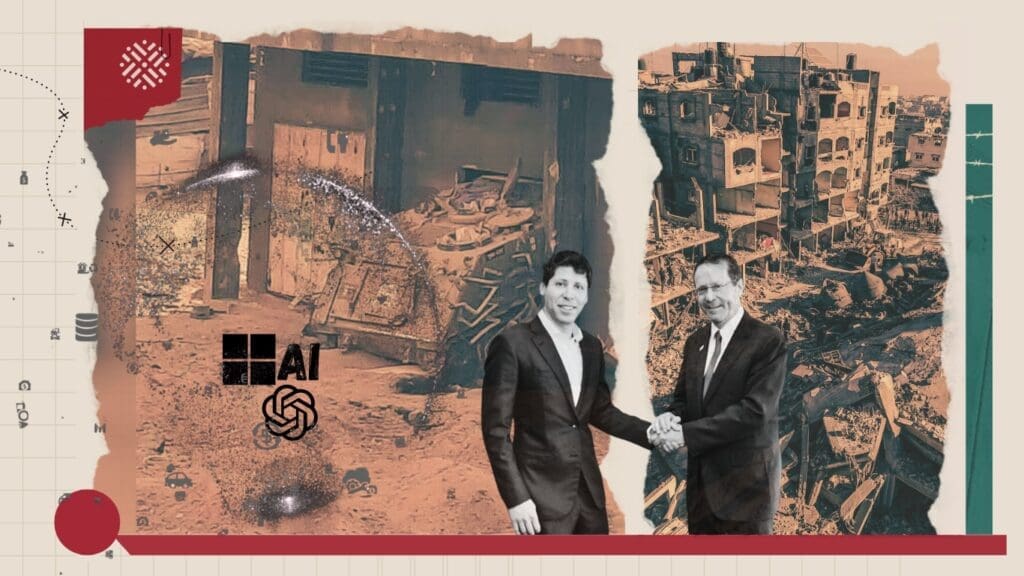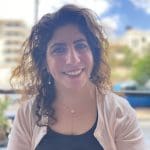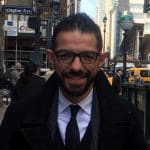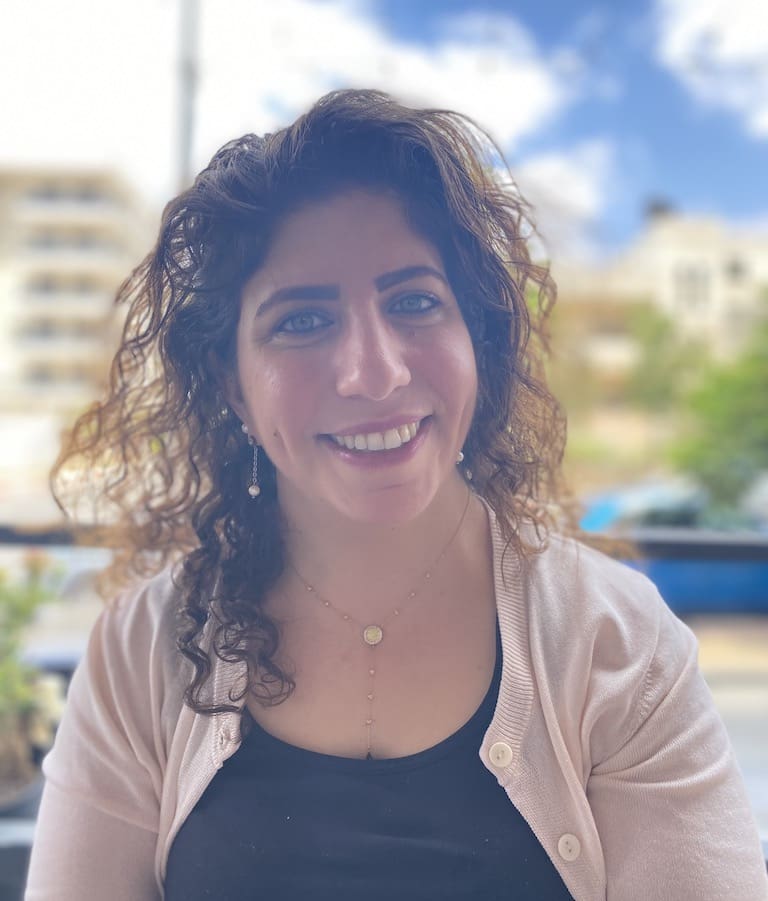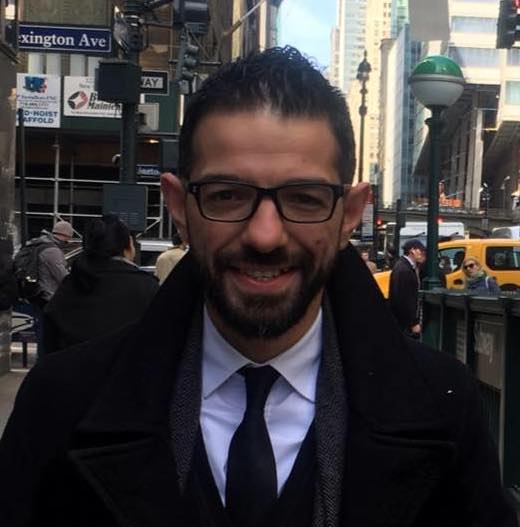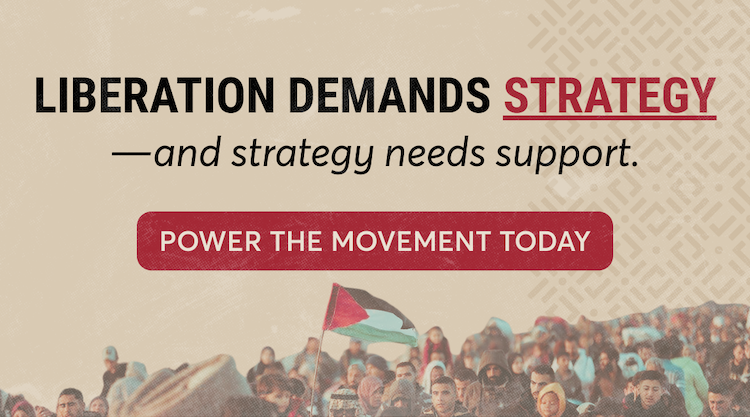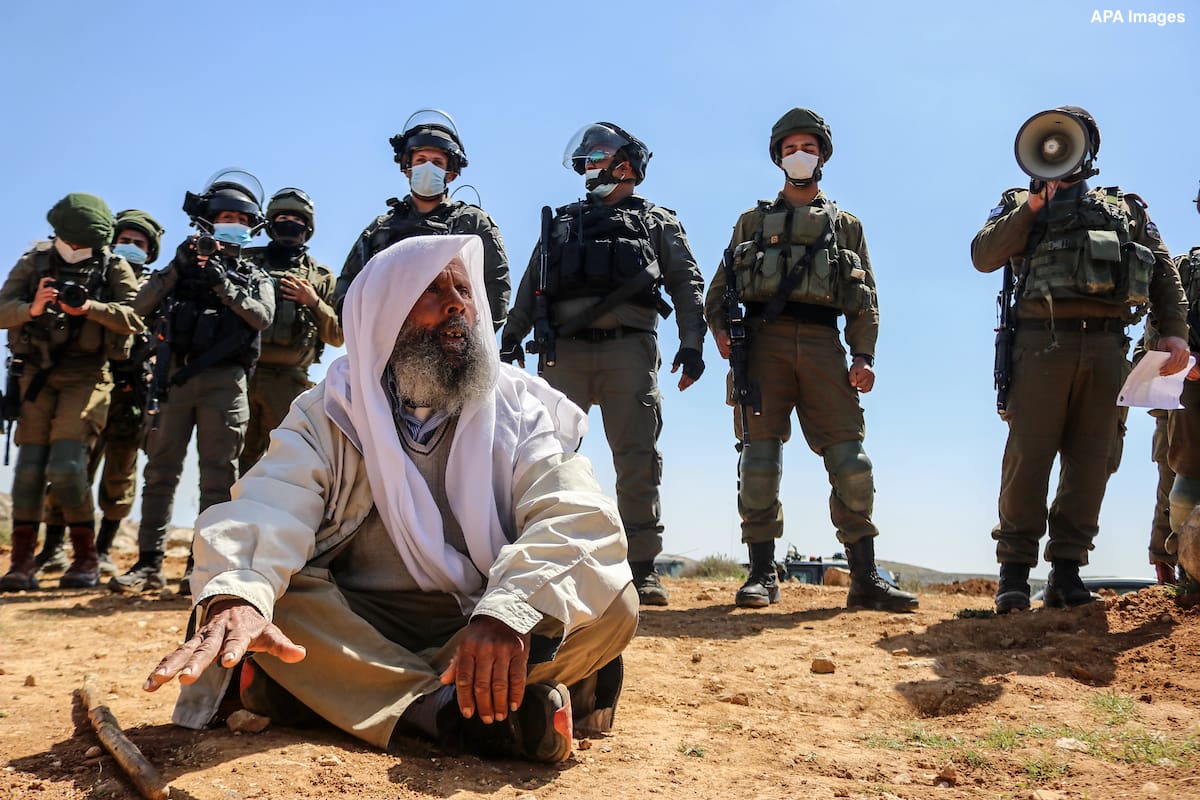
Executive Summary
To isolate East Jerusalem and bifurcate the West Bank, the Israeli regime is planning to annex the E-1 corridor, displacing 3,000 Palestinian Bedouins in the process. This policy brief situates Israel’s apartheid policies in the E-1 corridor within the wider framework of Israeli settler colonialism. It also shows how the large sums of humanitarian aid Palestinian Bedouins have received from international donors entrench the status quo of Israeli territorial expansion. Finally, it offers recommendations to donor states, international organizations, and Palestinian national stakeholders, among others, for how to secure the rights of Palestinian Bedouins and to challenge Israeli apartheid.
In the early 1950s, the Israeli regime expelled Palestinian Bedouins from their lands in Tel Arad in the Naqab, forcing them to relocate to the area now known as E-1. And in recent years, these Palestinians have faced a second wave of forcible displacement. Between 2009 and 2020, Israel destroyed 315 Palestinian structures in the 18 Bedouin communities within the E-1 corridor — 133 of which were donor-funded — thus displacing 842 Bedouins.
Beyond demolitions, the Israeli regime also displaces Palestinian Bedouins by rendering their lives unlivable: it denies them basic economic and social rights, including educational institutions, healthcare facilities, running water, electricity, a functional road system, and adequate public transportation. As a result, they have no choice but to relocate. And while these policies affect the entirety of the Bedouin community, they have a disproportionate impact on vulnerable and marginalized social groups, including women, children, persons with disabilities, and the elderly.
The Palestinian Authority (PA), Palestinian civil society organizations, and international agencies have supported Palestinian Bedouins in the E-1 corridor with humanitarian aid, aiming to maintain basic healthcare, education, and economic well-being. But these aid programs are structured in a way that limits their impact and, ultimately, harms their intended beneficiaries. That is, they are fundamentally depoliticized and are designed in isolation from the Bedouin communities.
Without their buy-in, aid priorities often do not reflect the needs of their recipients. As a result, aid programs simply mitigate the impacts of Israeli policies — and, in many cases, help to sustain Israeli apartheid conditions — rather than confront the root causes of Palestinian suffering. In the absence of requisite accountability for Israeli apartheid, this depoliticized aid thus fuels a vicious cycle: donors help Bedouin communities rebuild after Israeli demolitions, only to have Israel destroy donor-funded projects, necessitating additional aid and leaving Bedouins more dependent on donor support.
Donor investment in the Israeli regime’s 2004 “fabric of life” road infrastructure plan exemplifies the dangerous effects of so-called humanitarian aid. The plan would construct Palestinian-only roads to separate them from roads servicing Israeli settlements, and would likely enable Israel to annex the E-1 corridor and further displace Bedouin communities. The Israeli regime frames the plan as humanitarian, as a way to facilitate Palestinian mobility in the wake of the apartheid wall. And while the PA and donor states initially rejected the plan, a 2010 report revealed that 32% of Palestinian roads funded by USAID between 1999 and 2010 overlapped with the “fabric of life” plan.
Moreover, USAID pressured the PA into accepting these roads as part of a take-it-or-leave it approach within a broader infrastructure development package. The plan thus demonstrates how so-called development projects within the aid framework are continually utilized to entrench Israeli occupation and settler colonialism.
To achieve justice for Palestinian Bedouins:
- Donor states should hold the Israeli regime accountable for its settler-colonial and apartheid practices in their aid programming. They should reframe their aid programs to include provisions that directly confront Israel, including by conditioning arms sales and instituting accountability measures for demolitions, displacement, and land confiscation.
- International organizations and UN bodies working in the E-1 corridor should establish clear procedures and reporting requirements to ensure that their projects do not perpetuate Israeli apartheid and Palestinian dispossession. They should also act as intermediaries and convey the voices and priorities of the Bedouin communities and Palestinian CSOs to the donor community to ensure aid programs reflect the needs of their beneficiaries.
- International legal bodies should mediate the aid delivery process, protecting donor states that confront Israel’s apartheid policies by crafting provisions to ensure that Israel does not prohibit or restrict aid programs.
- Palestinian CSOs should collaborate in supporting Bedouin communities. This includes diversifying their sources of funding beyond institutional fundraising from traditional donors to better enable them to determine areas of intervention, target groups, and effective methodologies.
- The PA should uphold its responsibilities towards Bedouin communities in education and healthcare; it should support them by investing in a resistance economy; and it should support the mobilization of the Palestinian public to provide protection for Bedouin communities.
Overview
The E-1 corridor, located within Area C of the central West Bank, receives large sums of humanitarian aid, purportedly to help preserve the viability of a future Palestinian state within a two-state solution. The aid is meant to support the Palestinian Bedouin communities affected by Israel’s plan to isolate East Jerusalem from the remainder of the West Bank and to bifurcate the West Bank, rendering territorial contiguity impossible. 1
However, these aid programs are designed in isolation from Bedouin communities in the E-1 corridor, and thus do not reflect their priorities and aspirations. Moreover, donor aid to Palestinian Bedouins is fundamentally depoliticized, as it is limited to humanitarian measures that are meant to alleviate the impact of Israeli apartheid. This only normalizes Israeli settler-colonial and apartheid policies, rendering Palestinian Bedouins’ lives increasingly unlivable, especially for women and other marginalized members of these communities.
This policy brief situates the E-1 corridor within the wider framework of Israeli settler colonialism. It then exposes key failures in the aid framework that entrench the status quo of Israeli settler-colonial expansion. Lastly, it offers policy recommendations to the international donor community and to Palestinian national stakeholders for how to secure the rights of the indigenous Palestinian Bedouin communities in the E-1 corridor.2
Israeli Settler Colonialism in the E-1 Corridor
The E-1 corridor, home to 3,000 Palestinian Bedouins whom Israeli forces expelled from their lands in Tel Arad in the Naqab in the early 1950s, serves as a microcosm of Israel’s expansionist settler-colonial practices. To maximize territorial acquisition with a minimal Palestinian presence, the Israeli regime displaces Palestinians, confiscates Palestinian land, and colonizes it with Jewish settlers. Indeed, the number of Jewish settlers in the West Bank increased from 238,060 at the outset of the so-called peace process in 1993, to 688,262 in 2019, reflecting a 189% increase. Furthermore, Israel exploits 76.3% of the total area of Area C for settlement expansion.
Donors are perfectly willing to impose harsh conditions in their aid contracts to Palestinian NGOs, but fail to confront Israel’s forcible displacement, settlement expansion, and denial of services to Bedouin communities Share on X
Israeli regime forces also regularly demolish structures in Area C deemed as lacking the requisite construction permits and are thus built “illegally” according to a discriminatory permit and planning regime. Between 2009 and 2018, only 2.2% (98 out of 4,422) of requested building permits within Area C were granted by the Israeli Civil Administration, the military body responsible for “administering” the West Bank, forcing Palestinians to build and expand their houses without Israeli authorization.
Israeli forces also demolish donor-funded structures in Area C that are financed through taxpayer money from donor countries. Between 2001 and 2015, Israel razed and confiscated €65 million ($71,730,750) worth of donor-funded structures throughout Area C. However, rather than attempting to hold Israel accountable, the donor community has only responded to this destruction with toothless condemnations.
In the 18 Bedouin communities within the E-1 corridor, the Israeli military destroyed 315 Palestinian structures between 2009 and 2020, 133 of which were donor-funded.3 As a result, 842 Bedouins were displaced. Until they are able to rebuild, many families move to relatives’ homes, where they are forced to live in overcrowded and cramped quarters.
Beyond demolitions, Israeli de-development in the E-1 corridor — as well as in Bedouin communities throughout the Naqab — displaces Palestinian Bedouins indirectly by imposing a coercive environment that renders their lives unlivable. By denying Bedouins key economic and social rights, including educational institutions, healthcare facilities, running water, electricity, a functional road system, and adequate transportation, many communities have little choice but to relocate, normally to areas A and B of the West Bank.4
Only four out of the 18 Bedouin communities in the E-1 corridor have primary schools, all of which have outstanding demolition orders against them. Secondary education, on the other hand, remains unavailable throughout the area. This forces many residents to commute long distances to urban centers in order to attend school. For example, children in the Bir al-Maskoob community must walk 3.5 miles twice a day to attend primary and secondary schools.
So too does the E-1 corridor lack adequate healthcare infrastructure. Only one Bedouin community has a clinic, though doctors are rarely present and the facility lacks basic medications.5 As such, healthcare services for Bedouins are provided through mobile clinics operated by Palestinian civil society organizations (CSOs), UNRWA, and the Palestinian Authority (PA). These clinics reach communities twice a month at most, and provide only basic diagnostic testing and treatment services. For more complex procedures, residents of Bedouin communities must travel to Jericho, al-Ezariya, the Aqabet Jaber refugee camp, or other urban centers.
But to access these places, Palestinian Bedouins face serious challenges, including poor roads and a lack of public transportation, and are forced to walk across long distances. For example, the distance between the Abu Falah Khan al-Ahmar community and Jericho, where healthcare services are available, exceeds eight miles. Furthermore, residents of 13 Bedouin communities commute a distance of nearly two miles to reach their primary healthcare service provider, while the distance for the remaining five communities exceeds 4.5 miles.
These conditions disproportionately impact Bedouin women and girls, as they reinforce patriarchal social norms. In the wake of home demolitions, for example, women are forced to carry the usual burden of cooking, cleaning, and caring for children in unfamiliar and crowded surroundings. Moreover, girls face a heightened risk of danger — primarily from Israeli violence — on the long journeys to and from school.6 In the rare cases where Palestinian Bedouin girls finish secondary education, many are unable to complete higher education despite strong grades and, in some cases, receipt of scholarships. This is due not only to economic difficulties, but also patriarchal practices that forbid young women from leaving the community or taking public transportation without a male member of the family.7
Women’s access to healthcare is likewise contingent on the approval and accompaniment of a male member of the family,8 which disproportionately affects sick and pregnant women who require regular follow-up appointments. To make matters worse, travelers are forced to climb over fences in the vast majority of cases to reach the main road.9 In this way, while the Israeli occupation’s settler-colonial and apartheid policies affect the entirety of the Bedouin community, they have a disproportionate impact on vulnerable and marginalized social groups, including women, children, persons with impairments, and the elderly.
Aid Programming and Service Delivery in the E-1 Corridor
To support Bedouin communities’ steadfastness against Israeli settler-colonial policies, the PA, Palestinian CSOs, and international agencies offer funding for shelter, basic infrastructure and economic needs, as well as for education and healthcare. But the recipients of aid are not invited to participate in the processes of aid programming and provision. That is, international aid programs in the E-1 area are designed and developed by a consortium of humanitarian donors, and based on a vulnerability index that incorporates OCHA indicators on electricity, water, and infrastructure — all without consideration of the needs and priorities of the Bedouin communities.
Aid thus fuels a vicious and mutually-reinforcing cycle: donors help Bedouin communities rebuild after Israeli demolitions, only to have Israel destroy donor-funded projects, necessitating further aid Share on X
These programs take a humanitarian approach by focusing on maintaining minimum living standards, targeting healthcare, education, and economic well-being. In the event of demolitions, aid is meant to compensate for demolished structures, sometimes by providing caravans, as well as installing solar panels to generate electricity in areas that lack electricity supply.10 To secure fodder for Bedouin communities, to immunize their livestock,11 and to fund the development of income-generating projects, aid is funneled through the Ministry of Agriculture.12 Furthermore, aid programs sustain the aforementioned CSO and UNRWA mobile health clinics, and the PA provides healthcare coverage for the Bedouin communities for treatment in urban centers.13 Lastly, in 2017, 2018, and 2021, the PA was meant to provide transportation services for children to reach their schools in Area C, including for Bedouin communities in the E-1 corridor; however, these services were never furnished.14
The Limitations of Depoliticized Donor Aid
While aid programs fulfill a critical humanitarian function, they are structured in a way that limits their impact and, ultimately, harms their intended beneficiaries. First, the vulnerability index that underpins the design and delivery of aid is developed exclusively by donors and UN organizations, excluding members of the Bedouin communities. With the absence of recipient buy-in, the methods of identifying aid priorities often do not reflect the needs of their beneficiaries.
Moreover, the delivery of aid is depoliticized. Donor countries focus on remedying the daily humanitarian needs of Palestinian Bedouin communities impacted by Israel’s settler-colonial regime rather than challenging Israeli apartheid policies and prioritizing their right to return to their lands in Tel Arad. Indeed, donors are perfectly willing to impose harsh conditions in their aid contracts to Palestinian NGOs, but fail to confront Israel’s forcible displacement, settlement expansion, and denial of services to Bedouin communities. This double standard is even more blatant given that Israel’s actions violate international law and constitute war crimes. As signatories to the Fourth Geneva Convention, international donors are required to ensure respect for the convention, giving rise to legal obligations to prevent Israeli policies of colonization and forcible displacement in the E-1 corridor and across colonized Palestine.
By ignoring and sidestepping Israel’s occupation and dispossession of Palestinians, aid programming simply entrenches the status quo. It mitigates the impacts of Israeli policies — and, in many cases, helps to sustain Israeli apartheid conditions — rather than confront the root causes of Palestinian suffering. For example, to address poverty among Bedouin communities, donors provide monetary support and food packages instead of challenging the main source of destitution: Israel’s illegal occupation apparatus and its ongoing expansionist policies. Through land confiscation, restriction of access to land, and settler attacks, the Israeli regime prevents Bedouins from herding — the main source of livelihood for their communities.15
As another example, aid programs provide fodder — albeit inconsistently and in limited quantities — as a remedy for the lack of land for grazing, with no conditions imposed on Israel to end land confiscation and settlement expansion.16 Additionally, solar panels are distributed17 to provide electricity to Bedouin communities, absolving Israel of the responsibility to ensure extension of electric lines — a step that would require recognition of the connection that these communities have to the land and their right to live on it.
The potentially effective outcomes of aid are compromised by a lack of political protection for Bedouin communities in the E-1 corridor. Aid programs do not protect against the demolition of houses and schools, the confiscation of donor-supplied equipment, nor the crackdown on service-providing CSOs.
In the absence of requisite accountability, aid thus fuels a vicious and mutually-reinforcing cycle: donors help Bedouin communities rebuild after Israeli demolitions, only to have Israel destroy donor-funded projects, necessitating further aid. The result is that Palestinians are trapped within a traumatic pattern of loss and reconstruction, while donors benefit by having continuous projects in which to invest without fulfilling political obligations towards the Palestinians. The process points to the donors’ lack of authentic interest in sustainable solutions, and a prioritization of short-term answers that both fit within their depoliticized mandate and enable continued expenditures. This cycle ultimately exacerbates vulnerabilities of Bedouin communities, leaving them ever-more dependent on donor support.
Despite this cycle, Palestinians remain reliant on aid to support the provision of essential services. The ongoing reduction in aid to Palestine over the last decade is therefore very concerning. Following the turmoil of the 2011 uprisings across the Middle East and North Africa, international development aid shifted from a focus on Palestine to the broader region. According to the OECD Creditor Reporting System, total aid to Palestine declined from $1.5 billion in 2011 to $905.7 million in 2019; and aid to Palestinian CSOs decreased from $286.3 million to $193.8 million. In contrast, and during those same years, aid to CSOs in Syria increased from $20.3 million to $710.3 million, and from $55.5 million to $316.7 million in Yemen.
The reduction in funding to Palestinian CSOs has compounded the strain on service providers. Within the E-1 corridor, Israel’s decision to outlaw the Islah Charitable Society, which supported Bedouin communities through mobile clinics, and to freeze its bank accounts, exacerbated this strain. The Palestinian Medical Relief Society, which also provides mobile clinic services to Bedouin communities in the E-1 corridor, thus struggled to compensate for Islah and meet the healthcare needs of the Bedouin communities. It was forced to cut back on testing and medication services.18
The Effects of Aid Programming on Palestinian Infrastructure
The depletion of donor aid has undoubtedly harmed Palestinians, further shrinking the basic infrastructure for social services. The problem, however, is that international aid investment in Palestinian infrastructure has also had dangerous consequences. In addition to the fact that 72% of aid ends up funneled into the Israeli economy, Israel has continually moved forward with aid-funded infrastructure plans that deepen the fragmentation of Palestinian communities and that render their lives increasingly unlivable, while framing these plans as humanitarian.
Israel has continually moved forward with aid-funded infrastructure plans that deepen the fragmentation of Palestinian communities and that render their lives increasingly unlivable, while framing these plans as humanitarian Share on X
For example, in the E-1 corridor, the Israeli regime’s “fabric of life” road plan, first proposed in 2004, seeks to construct Palestinian-only roads in order to separate them from roads servicing Israeli settlements, thus advancing the E-1 corridor plan and further entrenching apartheid. If constructed, these roads would enable Israel to annex the E-1 corridor and solidify the Ma’ale Adumim settlement bloc as part of the Israeli state, thereby consolidating Israel’s grip on Jerusalem and increasing Jewish demographic dominance in the city — the capital of a future Palestinian state. The roads would also facilitate wider dispossession, as many of them would be built across Bedouin communities.
These road projects also show how Israel and international donors use aid to pressure the PA into accepting settler colonialism under the pretext of “humanitarian” work. The PA objected to the “fabric of life” plan when it was first proposed, arguing that it would entrench settlement expansion and land confiscation. Donor positions on the matter varied, with some supporting the project as a way to facilitate greater Palestinian mobility in the wake of the apartheid wall, while others expressed serious concerns. USAID refused to comment on either position. By the end of 2004, all donors, including USAID, had rejected the proposal out of a concern that they could be held legally accountable for funding projects that entrenched Israeli occupation.
But in 2020, former defense minister Naftali Bennett proposed the “fabric of life” plan for a second time. The new iteration does not include provisions to dismantle occupation apparatuses in the E-1 corridor, including roadblocks, checkpoints, settlements, and the apartheid wall. Rather, it necessitates maintenance of these structures. The plan aims to replace the geographical contiguity of a future Palestinian state with “transportational continuity” for the sake of the settler-colonial enterprise. It proposes a network of tunnels and secondary and unpaved roads that would restrict Palestinian access to only 20% of the roads designated for holders of Israeli residency and citizenship. This would effectively fragment Palestinian communities and advance the annexation of large swaths of land, removing Palestinian Bedouins from their current localities in the process.
By defining the “fabric of life” plan as one that is both humanitarian for Palestinians and one that fulfills Israel’s security needs, the Israeli regime managed to construct a new reality to conceal the violence of settler colonialism. And despite the PA and donor community’s rejection of the plan, a 2010 report revealed that 32% of Palestinian roads funded by USAID between 1999 and 2010 overlapped with the “fabric of life” plan. The head of the settlement monitoring project at Applied Research Institute, Jerusalem (ARIJ), suggests that USAID pressured the PA into accepting the plan as part of a take-it-or-leave it approach within a broader infrastructure development package.
In early 2021, Israel allocated NIS 14 million towards the construction of the “Ma’ale Adumim Fabric of Life Road,” also known as the “Sovereignty Road.” This plan promotes settlement construction in Ma’ale Adumim and further separates East Jerusalem from the remainder of the West Bank. In particular, it not only isolates the Ma’ale Adumim settlement from the nearby Palestinian towns of al-Ezariya and Abu Dis, but also advances annexation of E-1 to Jerusalem, which would greatly increase Jewish demography in the city, in addition to bifurcating the West Bank.
These road projects demonstrate how aid is diverted back to the Israeli regime, and how so-called development projects within the aid framework are continually utilized to entrench the occupation and settler colonialism. This is another vicious cycle: as a result of Israeli apartheid, Palestinian Bedouins in the E-1 corridor lack sufficient road infrastructure, and the response of international aid of investing in Israeli road development plans has only reinforced apartheid conditions.
Recommendations
The depoliticized nature of current aid programs in the E-1 corridor has entrenched Israel’s apartheid policies. In order to confront the Israeli regime and secure justice for Palestinian Bedouins, there are concrete steps that key actors, including the donor community, international organizations, Palestinian CSOs, and the PA must take:
- Donor states should consider Israeli demolition and confiscation measures as an integral part of the regime’s policies of settler colonialism and apartheid, rather than continuing to view them in isolation from the broader policy. They should reframe their financial aid programs to Israel to include provisions that hold it accountable for its practices, including by imposing conditions on arms sales and establishing measures to ensure accountability for demolitions, displacements, and land confiscations.
- International organizations and UN bodies working in the E-1 corridor should establish clear procedures and reporting requirements to ensure that their projects do not perpetuate Israeli apartheid and Palestinian dispossession. They should also act as intermediaries and convey the voices and priorities of the Bedouin communities and Palestinian CSOs to the donor community to ensure aid programs reflect the needs of their beneficiaries.
- International legal bodies should mediate the aid delivery process, protecting donor states that confront Israel’s apartheid policies by crafting provisions that ensure that Israel does not prohibit or restrict aid programs.
- Palestinian CSOs should collaborate in supporting Bedouin communities. This includes diversifying their sources of funding beyond institutional fundraising from traditional donors to better enable them to determine areas of intervention, target groups, and effective methodologies. This would allow CSOs to design their programs independently and in a manner that supports Bedouin needs and priorities, particularly in light of increasing donor conditionality.
- The PA should uphold its responsibilities towards Bedouin communities in education and healthcare; it should make its strategy for supporting them public; and it should work to adopt a participatory approach with all relevant national stakeholders in its implementation of the strategy.
- To read this piece in French, please click here. Al-Shabaka is grateful for the efforts by human rights advocates to translate its pieces, but is not responsible for any change in meaning.
- This policy brief draws on research conducted for the project, “Palestinian Bedouins at Risk of Forcible Displacement: IHL Vulnerabilities, ICC Possibilities.” The views contained in this brief are those of the authors, and do not necessarily reflect the positions of the members of the project, nor those of the supporting universities and organizations. The authors would like to extend particular gratitude to Raghad Adwan, field researcher at the Al-Quds Human Rights Clinic, for her invaluable contributions to the project.
- These Bedouin communities are: Abu George Nkheila, Abu George Kassara, Abu Nuwaar, al-Muntar, al-Za’ayem, al-Za’ayem Za’atreh, Bir al-Maskoob A, Bir al-Maskoob B, Jabal al-Baba, Khan al-Ahmar Wadi Abu al-Helu, Khan al-Ahmar Wadi Abu Falah, Khan al-Ahmar Makab al-Samen, Khan al-Ahmar Mihtawish, Khan al-Ahmar Wadi al-Sider, Wadi Abu Hindi, Wadi al-A’waj, Wadi al-Jimel, Wadi Sneysel.
- Based on interviews conducted by the Al-Quds Human Rights Clinic with Bedouin communities, March 2021.
- Id., January 2021.
- Based on an interview by Al-Quds Human Rights Clinic with Mustafa Khawaja, Director General of Registry and Statistical Monitoring, Palestinian Central Bureau of Statistics, August 23, 2021.
- Based on interviews conducted by Al-Quds Human Rights Clinic with Bedouin communities, November 2020.
- Id., January 2021.
- Based on an interview conducted by Al-Quds Human Rights Clinic with Mohammad Iskafi, Emergency and Mobile Clinics Program Director, Palestinian Medical Relief Society, August 21, 2021.
- Based on interviews conducted by Al-Quds Human Rights Clinic with Bedouin communities and international organizations, November 2020.
- Based on interviews conducted by Al-Quds Human Rights Clinic with Bedouin communities, November 2020.
- Based on an interview conducted by Al-Quds Human Rights Clinic with Sahar al-Qawasmeh, General Director, Roles for Social Change Association, August 22, 2021.
- Based on an interview conducted by Al-Quds Human Rights Clinic with the Social Development Directorate, Jerusalem, August 21, 2021.
- Based on interviews conducted by Al-Quds Human Rights Clinic with Bedouin communities, November 2020.
- Based on an interview conducted by Al-Quds Human Rights Clinic with the Social Development Directorate, Jerusalem 2021.
- Based on an interview conducted by Al-Quds Human Rights Clinic with a 52-year-old member of a Bedouin community, November 2020.
- Based on interviews conducted by Al-Quds Human Rights Clinic with Bedouin communities, November 2020.
- Based on an interview conducted by Al-Quds Human Rights Clinic with Dr. Mohammad Iskafi, Emergency and Mobile Clinics Program Director, Palestinian Medical Relief Society, August 21, 2021.

